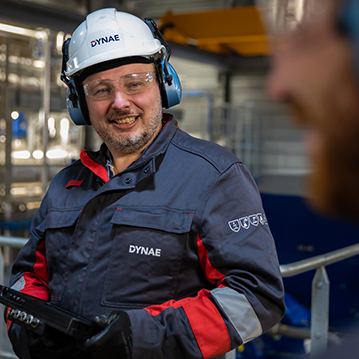
Making a relevant diagnosis requires adapting the investigation methods and the interpretation of the measurements according to the process in which the equipment is integrated. There are faults specific to certain processes and the same symptom may give rise to different recommendations depending on the context: hydroelectric generators, paper machines or centrifugal pumps.
GHE COURSE
Vibration diagnosis of hydroelectric generators
-
Duration
3 days
-
Option - application - diagnoses on real signals
1 day
Approach and diagnosis carried out by the participants on real signals.
Possibility to come with your own signals or experience feedback. -
Prerequisites
Knowledge of vibration analysis (Vi)
-
Objectives
Acquire the specific knowledge necessary for the implementation of vibration diagnoses on generators driven by hydraulic turbines.
-
Target audience
Operators, manufacturers or maintainers of hydraulic generators.
-
Programme
- Reminders about vibration measurement
- Vibration diagnosis of the main faults encountered.
- Signal processing: orbits, temporal and synchronous analysis, gaps.
- Analysis of transient or unsteady behaviour.
- Hydraulic vibrations.
- Electromagnetic phenomena.
- Existing standards and interpreting them.
- Industrial examples and case studies on hydroelectric generators.
-
The advantages
- Dynae’s wealth of experience in the field of hydroelectricity
- Case studies on hydroelectric generators and other equipment
MAP COURSE
Paper machines
-
Duration
2 days
-
Prerequisites
Vi, VD or VMD courses
-
Objectives
Discover innovative methods that go beyond simple vibration monitoring allowing the reduction of sheet breakage, scrap and premature wear of press coating, canvas and felts and other machines in the papermaking process.
-
Target audience
Maintenance, production, technical and quality staff.
-
Programme
- Monitoring and vibration diagnosis of low-speed bearings (dryers, Yankee) and gear transmissions: reducers, dryer drive pinion boxes.
- Analysis of torque fluctuations and instantaneous rotational speed by analysis of motor supply currents and tacho signals.
- Monitoring of changes in the dynamic profiles of presses by analysing the pressure fluctuations of the contacting cylinders.
- Analysis of fluctuations in weight or thickness.
- Search for the causes of barring.
- Case studies on papermaking process machines.
-
The advantages
- Dynae’s wealth of experience in the field of papermaking
- Diagnosis of process faults
VPC Course – Diagnosis of centrifugal pumps
Course given in association with SULZER
-
Duration
3 days
-
Prerequisites
Vi, VD or VMD training courses
-
Objectives
- Understand the operation of a centrifugal pump
- Correlate process and vibrations
- Perform diagnoses on faults arising from the pump or how it operates
-
Target audience
Anyone in charge of the design, operation or maintenance of centrifugal pumps wishing to acquire technical mastery of this equipment with the aim of extending its life, optimising its operation and energy consumption or to makes plans for new equipment.
-
Programme
Operation of centrifugal pumps (managed by SULZER):
- Wheel and sealing technology, operation, NPSH.
- The pump in the network.
- Measurable variables and the physical laws which link them.
Vibration analysis (managed by Dynae):
- Typological spectrum of a centrifugal pump.
- Mechanical faults: unbalance, rolling, friction, etc.
- Hydraulic faults: cavitation, unpriming, pulsations.
- Influence of operating conditions.
- Interactive case studies.
-
Putting into practice
The trainees are welcomed on the test platform at the SULZER site in Ambès (F) to put into practice the elements presented over the previous 2 days.
Procedure and diagnosis carried out by the participants on a pump. -
The advantages
- Training course developed in association with a specialist in SULZER centrifugal pumps
- Practice on pump test loop

